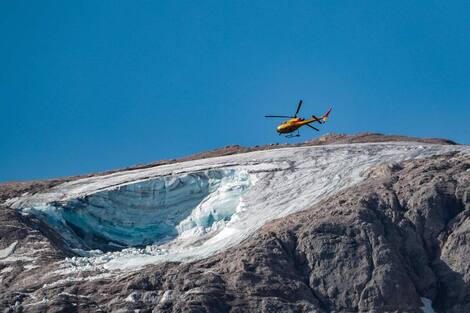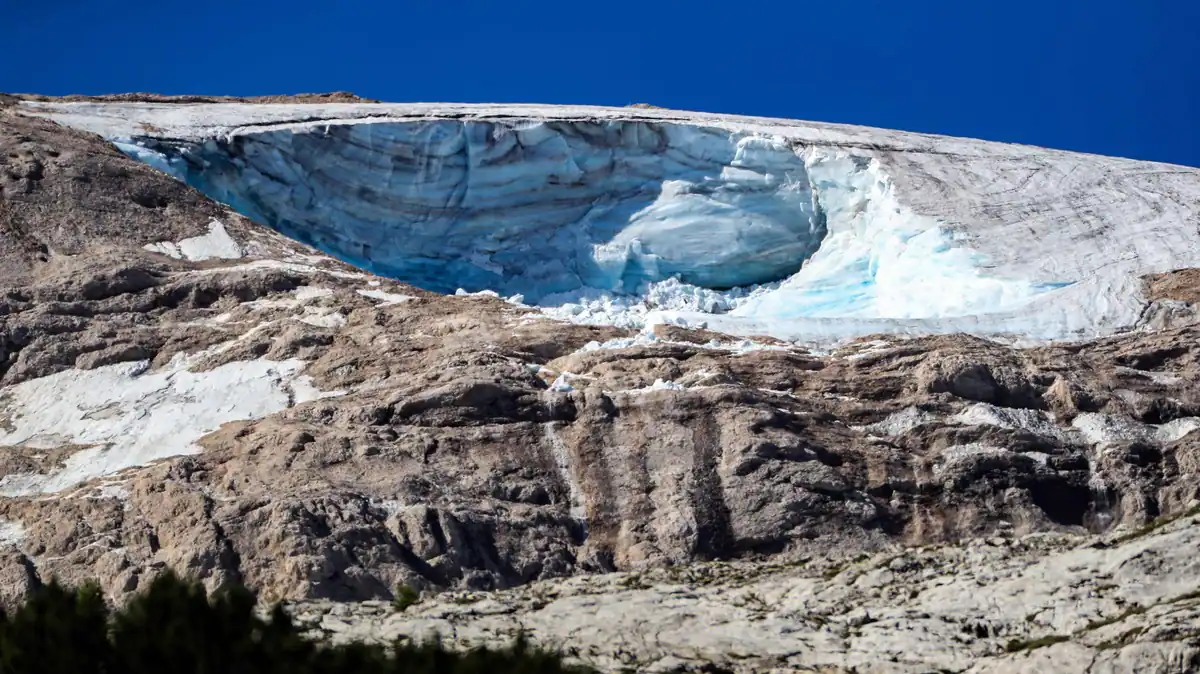The Italian Prime Minister confirmed, Monday, that the collapse of part of the Marmolada glacier, which is the largest in the Italian Alps, is closely linked to global warming.
• Read also: Avalanche in the Italian Alps: at least 6 dead
14 people were also reported missing by their relatives, but their presence there was not confirmed when the glacier broke. Among the injured are two Germans, a 67-year-old man and a 58-year-old woman, who are still in serious condition.
The disaster, which occurred the day after a record temperature of 10 degrees Celsius on top of the glacier, in the midst of an early heat wave on the Italian peninsula, is “undoubtedly” linked to “the deterioration of the environment and climate.” Mario Draghi said immediately on Monday, who expressed For his “support” to the families of the victims.
Canazei mayor Giovanni Bernard told AFP that rescuers deployed drones equipped with thermal cameras, hoping to find any survivors in the mass of ice and collapsed rocks. “These are dangerous conditions for lifeguards” who cannot advance on foot.

France Press agency
The head of the high-mountain rescue services in the area, Giorgio Jäger, warned AGI that the chances of finding survivors were “almost non-existent”.
“I was on the balcony of the shelter, and I heard a bang, turned to my left and saw a block of ice coming down from the mountain and then a big cloud of dust. It lasted two or three minutes and the ice cloud disappeared,” Luca Medici, 54, a ski instructor who lives in Canazei told AFP. .
Only three of the seven victims have been identified, but the authorities have not released their nationalities.

France Press agency
The glacier collapsed near the Punta Roca area, along the route normally taken to reach its summit.
Massimo Frisotti, a professor in the Department of Science at the University of Rome Tre, explained that the tragedy “is the result of current weather conditions, that is, an episode of early heat coinciding with the problem of global warming.”

France Press agency
“The melting in the Alps accelerated. We had a very dry winter, with a lack of precipitation by 40-50%. According to the researcher, the current conditions of the glacier correspond to mid-August and not the beginning of July.
“Because of the extremely high temperatures, a water buildup unfortunately formed under the glacier, causing the collapse,” said Paolo Talmon, 56, owner of the inn, Marmolada Glacier. “I’ve lived here for 50 years and this is the first time I’ve seen this.”
Footage filmed from a shelter near the disaster shows glacier debris mixed with rocks falling down the slopes of the mountain with crashing noises at 300 km/h, according to local authorities. Other photos taken by tourists on their mobile phones show the gray avalanche tongue from afar, sweeping everything in its path, leaving no opportunity for climbers in its path.
In the images transmitted by rescue operations in the Alps, we can see rescuers working near the disaster site, flying helicopters to transport victims in the valley to the village of Kanazei, not far from where the cable car to the top of the glacier is located.
The Marmolada glacier, nicknamed the “Queen of the Dolomites,” is the largest glacier in this mountain range in northern Italy, part of the Alps. Located in Trentino, it generates the Aficio River and overlooks Lake Vidaia.
According to the Intergovernmental Panel on Climate Change (IPCC) report published on March 1, melting snow and ice is one of the ten major threats posed by global warming, disrupting ecosystems and threatening some infrastructure.
The IPCC reports that glaciers in Scandinavia, Central Europe and the Caucasus could lose 60 to 80% of their mass by the end of the century.

“Extreme twitteraholic. Passionate travel nerd. Hardcore zombie trailblazer. Web fanatic. Evil bacon geek.”

